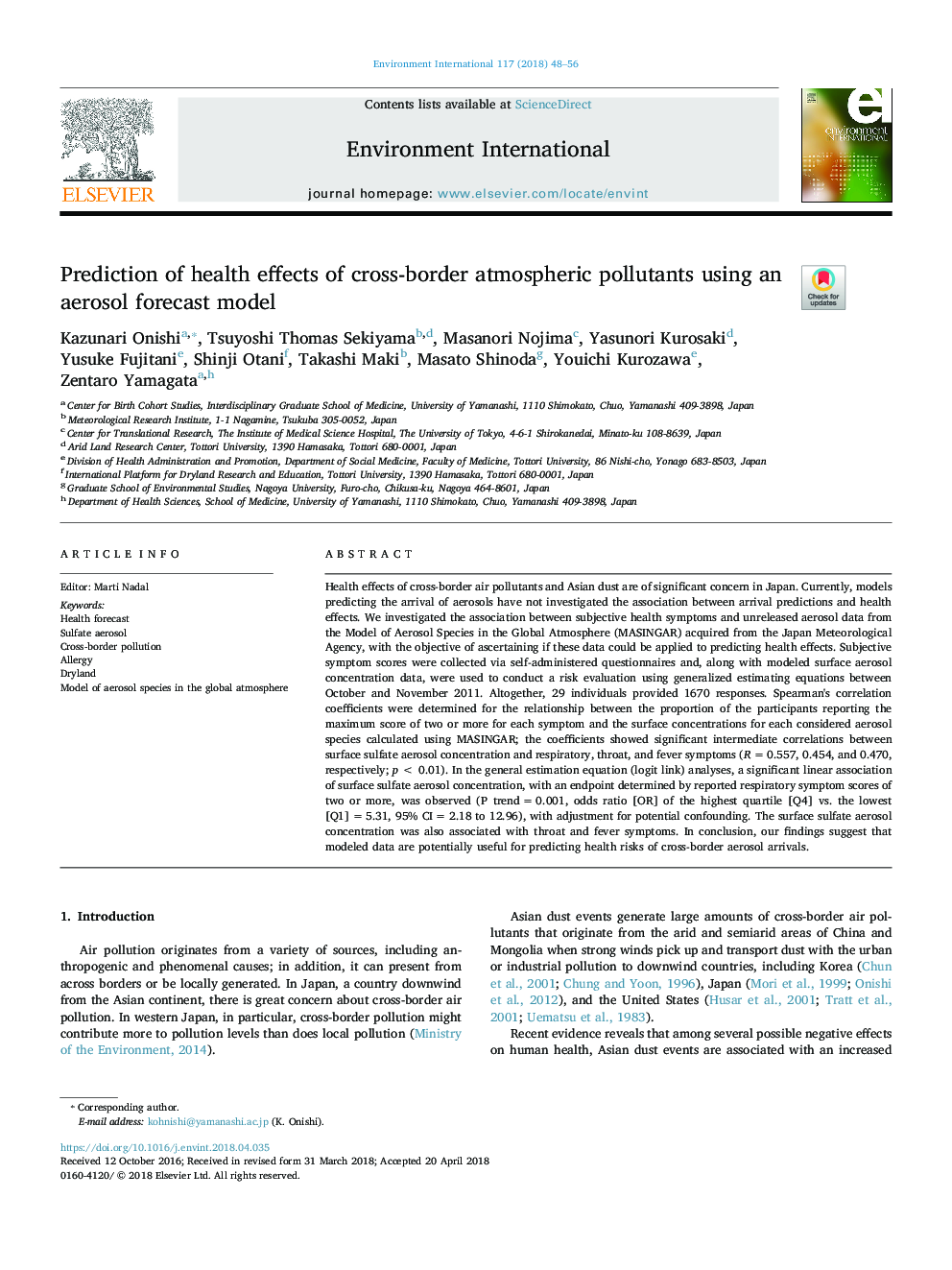| کد مقاله | کد نشریه | سال انتشار | مقاله انگلیسی | نسخه تمام متن |
|---|---|---|---|---|
| 8855072 | 1619013 | 2018 | 9 صفحه PDF | دانلود رایگان |
عنوان انگلیسی مقاله ISI
Prediction of health effects of cross-border atmospheric pollutants using an aerosol forecast model
ترجمه فارسی عنوان
پیش بینی تاثیرات سلامت آلودگی های اتمسفر مرزی از طریق مدل پیش بینی هوا
دانلود مقاله + سفارش ترجمه
دانلود مقاله ISI انگلیسی
رایگان برای ایرانیان
کلمات کلیدی
پیش بینی سلامت آرسل سولفات، آلودگی مرزی آلرژی، سرزمین خشک، مدل گونه های آئروسل در فضای جهانی،
موضوعات مرتبط
علوم زیستی و بیوفناوری
علوم محیط زیست
شیمی زیست محیطی
چکیده انگلیسی
Health effects of cross-border air pollutants and Asian dust are of significant concern in Japan. Currently, models predicting the arrival of aerosols have not investigated the association between arrival predictions and health effects. We investigated the association between subjective health symptoms and unreleased aerosol data from the Model of Aerosol Species in the Global Atmosphere (MASINGAR) acquired from the Japan Meteorological Agency, with the objective of ascertaining if these data could be applied to predicting health effects. Subjective symptom scores were collected via self-administered questionnaires and, along with modeled surface aerosol concentration data, were used to conduct a risk evaluation using generalized estimating equations between October and November 2011. Altogether, 29 individuals provided 1670 responses. Spearman's correlation coefficients were determined for the relationship between the proportion of the participants reporting the maximum score of two or more for each symptom and the surface concentrations for each considered aerosol species calculated using MASINGAR; the coefficients showed significant intermediate correlations between surface sulfate aerosol concentration and respiratory, throat, and fever symptoms (Râ¯=â¯0.557, 0.454, and 0.470, respectively; pâ¯<â¯0.01). In the general estimation equation (logit link) analyses, a significant linear association of surface sulfate aerosol concentration, with an endpoint determined by reported respiratory symptom scores of two or more, was observed (P trendâ¯=â¯0.001, odds ratio [OR] of the highest quartile [Q4] vs. the lowest [Q1]â¯=â¯5.31, 95% CIâ¯=â¯2.18 to 12.96), with adjustment for potential confounding. The surface sulfate aerosol concentration was also associated with throat and fever symptoms. In conclusion, our findings suggest that modeled data are potentially useful for predicting health risks of cross-border aerosol arrivals.
ناشر
Database: Elsevier - ScienceDirect (ساینس دایرکت)
Journal: Environment International - Volume 117, August 2018, Pages 48-56
Journal: Environment International - Volume 117, August 2018, Pages 48-56
نویسندگان
Kazunari Onishi, Tsuyoshi Thomas Sekiyama, Masanori Nojima, Yasunori Kurosaki, Yusuke Fujitani, Shinji Otani, Takashi Maki, Masato Shinoda, Youichi Kurozawa, Zentaro Yamagata,
